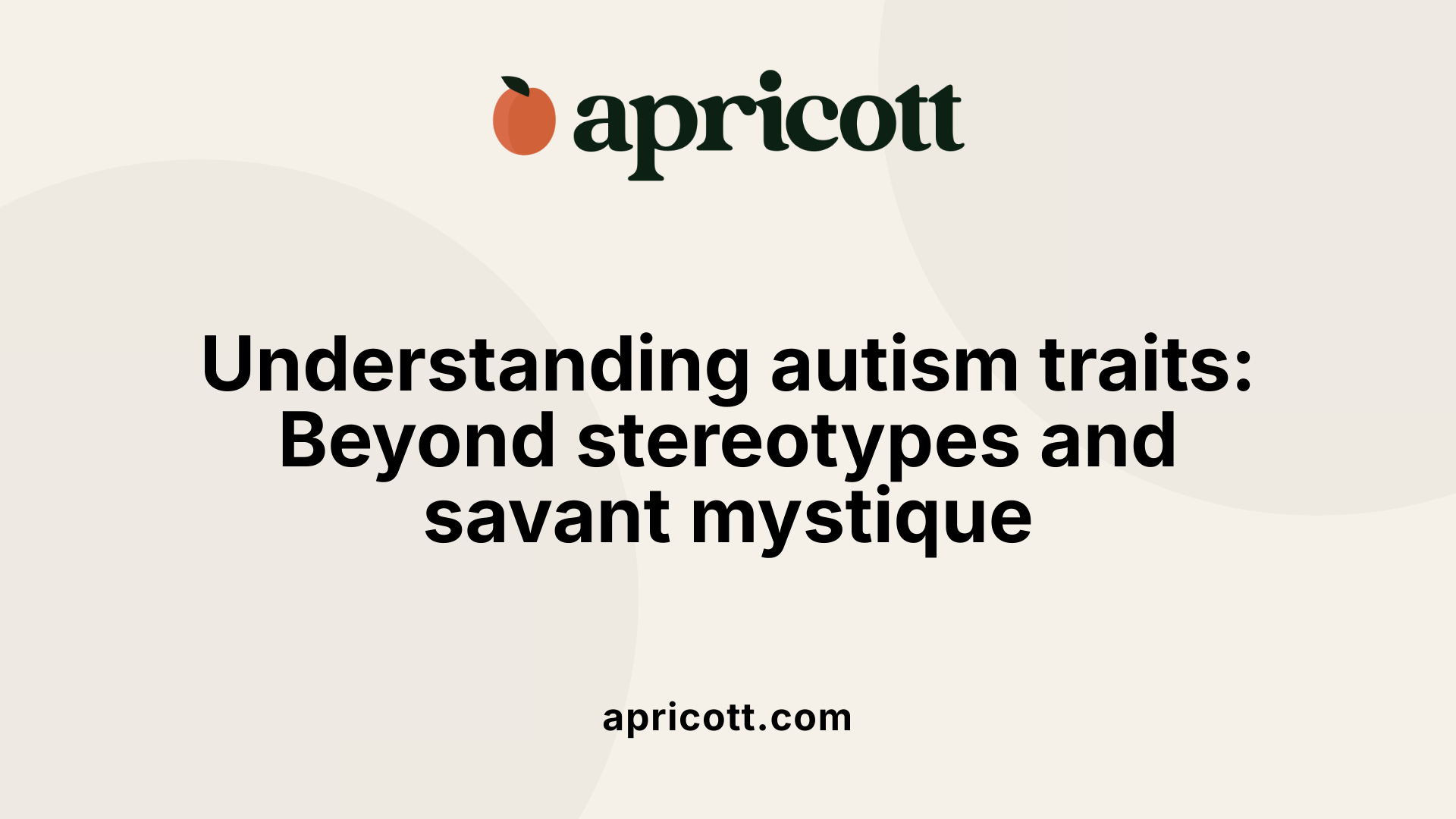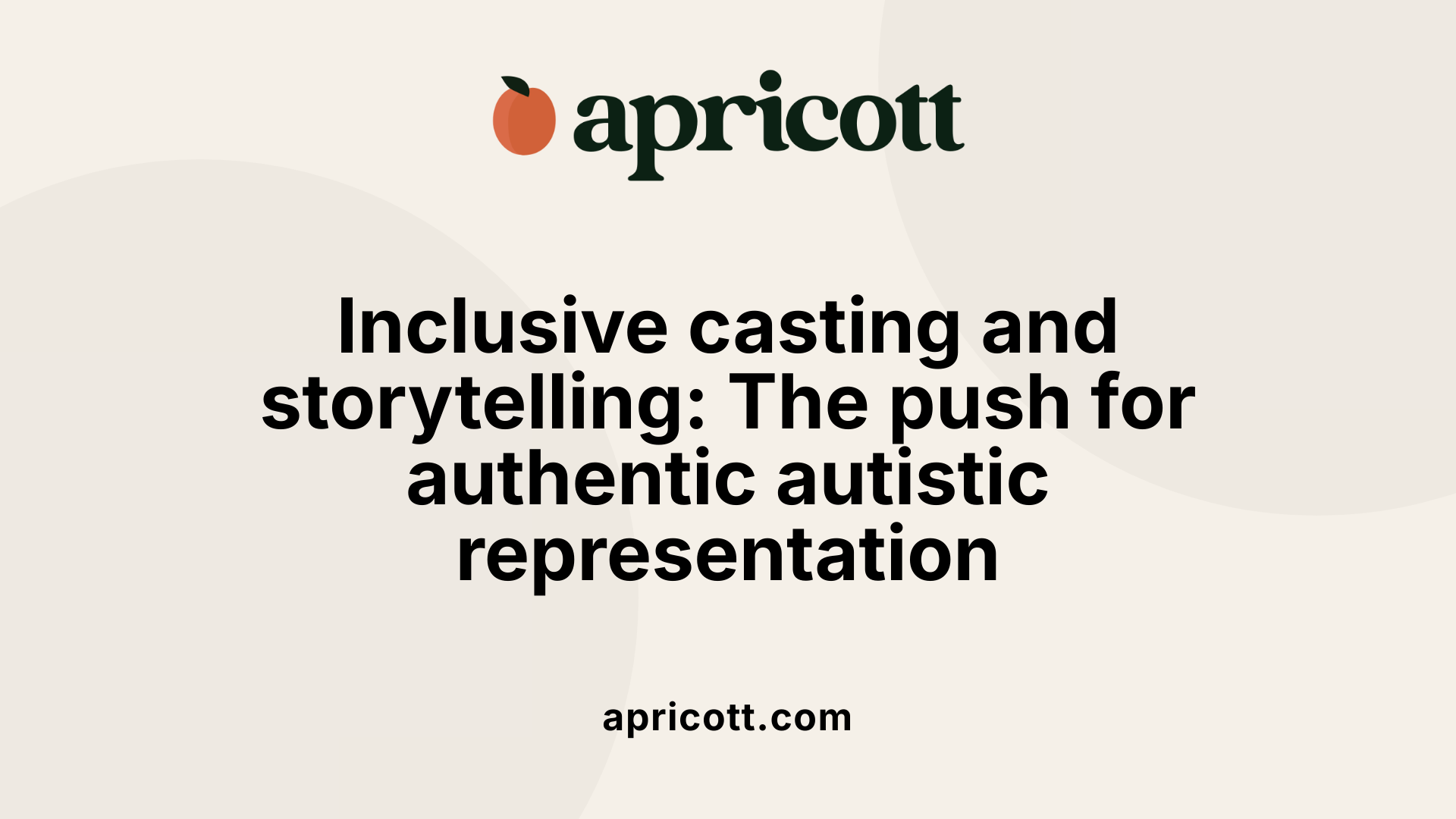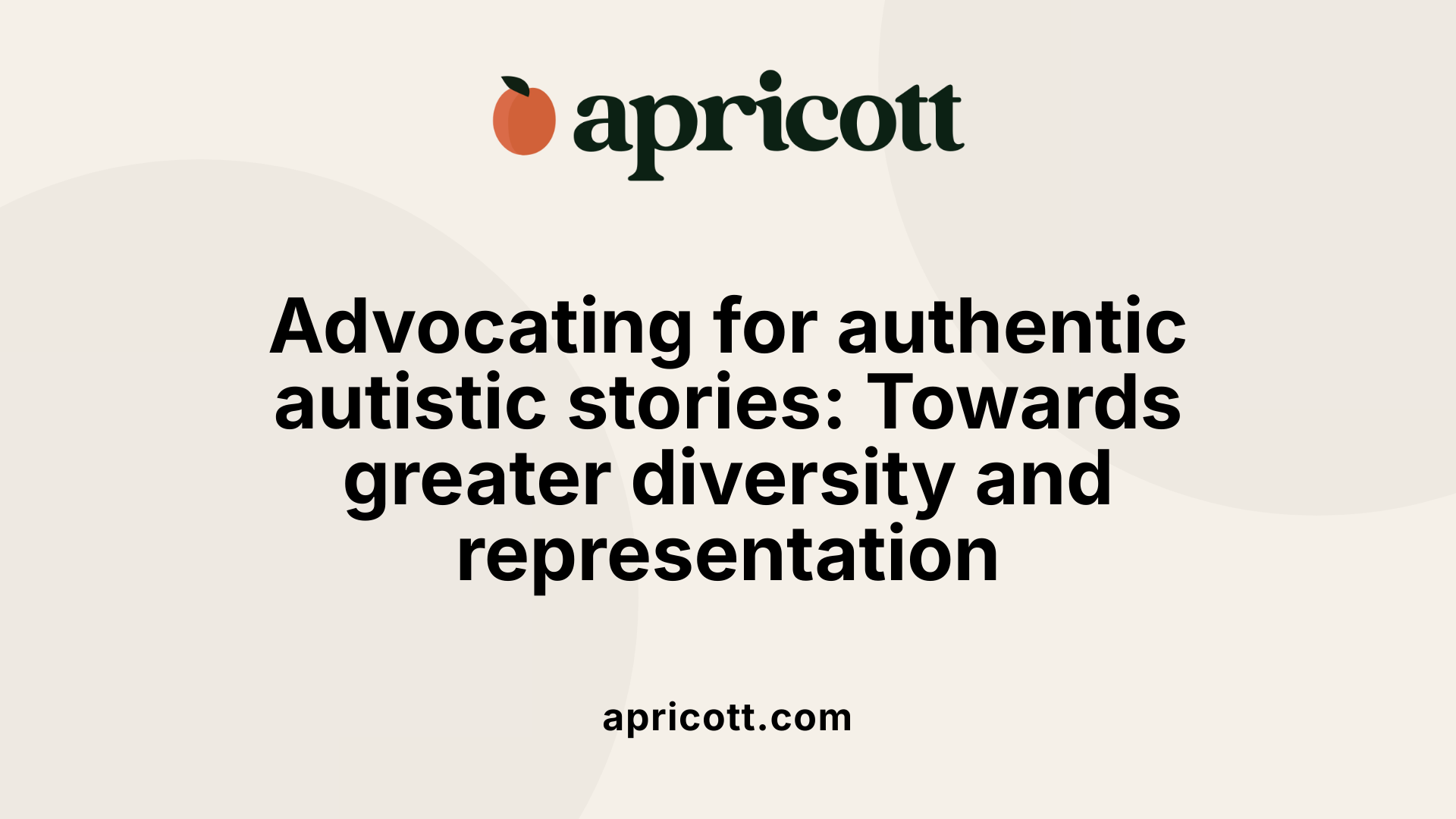August 7, 2025
Unveiling 'The Good Doctor': Autism, Representation, and Reality
The television series 'The Good Doctor' has sparked widespread discussion about autism spectrum disorder (ASD), particularly through its depiction of the titular character, Dr. Shaun Murphy. As a medical drama centered around a young surgeon with autism and savant syndrome, the show has both increased visibility for neurodiverse individuals and faced scrutiny over accuracy and stereotypes. This article explores whether the series accurately portrays autism, the portrayal's impact on perceptions, and the ongoing conversations around representation in media.
'The Good Doctor' centers around Dr. Shaun Murphy, a young surgical resident with autism spectrum disorder and savant syndrome. Shaun is depicted as brilliant in his medical skills, especially with visualizing complex surgeries, but faces challenges in social interactions and understanding nonverbal cues.
The show's portrayal aims to highlight both Shaun’s remarkable talents and his struggles, providing viewers with a nuanced view of living with autism. His behaviors include difficulty with social cues, sensory sensitivities, and a preference for routines, such as always having yogurt and a green apple for breakfast.
Shaun Murphy exhibits traits characteristic of autism, like sensory sensitivities—such as being distracted by a high-pitched buzzing light—and literal thinking. His heightened perception allows him to notice minute details, like slight irregularities on a heart rate monitor, exemplifying savant syndrome.
While the show emphasizes Shaun’s exceptional abilities, it also presents realistic challenges, including misunderstandings with colleagues and emotional regulation issues. However, critics have pointed out that the depiction sometimes leans on stereotypes, like portraying autism predominantly through the lens of extraordinary gifts.
Freddie Highmore portrays Shaun Murphy in 'The Good Doctor.' Although high praise has been given for his performance, Highmore does not have autism himself. His role involves embodying a character with neurodiverse traits, which has sparked discussions about authenticity and representation.
Despite not being on the autism spectrum, Highmore's portrayal includes behaviors such as social awkwardness and hand-flapping under stress, aiming to capture the character's emotional depth and challenges.
The series has played a significant role in raising awareness about autism spectrum disorder, though it has also been criticized for perpetuating the 'autistic savant' stereotype, often focused on white, male genius characters. This portrayal, while compelling, does not fully represent the diversity of experiences among autistic individuals.
Nevertheless, the show has contributed to broader conversations about neurodiversity and inclusion, encouraging viewers to see autism as a spectrum with varied strengths and challenges.
| Aspect | Description | Notes |
|---|---|---|
| Main Character | Shaun Murphy | Portrayed by Freddie Highmore |
| Autism Traits | Social difficulties, routines, sensory sensitivities | Based on ASD characteristics |
| Savant Syndrome | Exceptional memory and pattern recognition | Present in Shaun |
| Actor | Freddie Highmore | Does not have autism |
| Representation Issues | Stereotypes, lack of diversity | Criticized for oversimplification |
This depiction continues to fuel vital discussions on authentic representation and how media influences societal perceptions of autism.

In 'The Good Doctor,' Shaun Murphy is shown as a person with autism spectrum disorder and savant syndrome. His traits include an exceptional memory and remarkable attention to detail, especially in his medical work, which highlights the strengths often associated with savant syndrome. The show emphasizes that Shaun faces challenges in interpreting social cues, which can lead to misunderstandings with colleagues and patients.
He communicates in a straightforward, literal manner that sometimes upsets others, illustrating common communication differences experienced by many on the autism spectrum. Additionally, Shaun displays sensory sensitivities; for example, he is distracted by high-pitched noises or bright lights, and he prefers routines, such as his consistent breakfast of yogurt and a green apple.
Despite these challenges, Shaun also demonstrates meaningful emotional connections and empathy, especially in his relationships with colleagues and his developing romantic relationship with Lea. This portrayal aims to show the diversity within autism, moving beyond stereotypes by presenting a character who has both difficulties and strengths.
The character exhibits traits such as social awkwardness, difficulty in reading social cues, and adherence to routines. His heightened perception allows him to notice minute details, which is crucial in his role as a surgeon. His ability to see patterns and irregularities in medical data illustrates how his exceptional skills are integral to his character.
Shaun's sensory sensitivities are depicted through his reactions to loud or high-pitched sounds and bright lights, which can distract or overwhelm him. His routines, like his breakfast choice and rigid daily schedule, underscore his need for predictability, a common trait among many individuals with autism.
Shaun’s extraordinary cognitive abilities, including his perfect memory and pattern recognition skills, are portrayed as both a gift and a source of difficulty. These skills allow him to excel in complex surgical procedures and diagnostics, emphasizing that many on the autism spectrum can have remarkable talents. The show uses his abilities to challenge outdated notions that autism only involves deficits, instead showcasing a spectrum of skills and traits.
| Trait Type | Description | Example from the Show |
|---|---|---|
| Social Skills | Difficulty interpreting social cues | Shaun often misses social nuances but is compassionate |
| Sensory Perception | Heightened sensory awareness | Distracted by buzzing lights or loud sounds |
| Routines | Preference for structured routines | Always eats yogurt and an apple for breakfast |
| Cognitive Skills | Exceptional memory and pattern recognition | Detected subtle irregularities in medical scans |
Debates about how accurately this portrayal reflects the wide range of autistic experiences continue, with some critics noting that the character's savant abilities contribute to stereotypes. However, the show emphasizes that autism manifests differently in each individual, aiming to promote better understanding and acceptance.
The portrayal of autism in 'The Good Doctor' reflects a mixture of authentic traits and dramatic storytelling. Dr. Shaun Murphy, the character at the center, exhibits behaviors such as social awkwardness, difficulty with nonverbal cues, and sensory sensitivities. These traits closely resemble actual experiences of many with autism, particularly those with Asperger’s Syndrome, a form of ASD. For example, Shaun's ongoing routines, like always having yogurt and a green apple for breakfast, exemplify typical adherence to routines seen in many on the spectrum.
Freddie Highmore's performance has been praised by autism advocates and organizations such as Autism Ontario for capturing certain core characteristics, including social challenges and sensory sensitivities. However, since Highmore does not have autism himself, some critics argue that the portrayal inevitably simplifies the diverse experiences of autistic individuals. Aspects like savant syndrome — exceptional memory and pattern recognition — are included and are accurate for a subset of people with autism, but they do not represent the full range of autistic profiles.
Experts and advocates have weighed in on the show's depiction. Kerry Magro, an autism advocate, and autism organizations acknowledge the show’s efforts in portraying a nuanced character. Nonetheless, they also highlight criticisms that the series tends to lean on stereotypes, particularly the idea of autism as a 'superpower,' which can inadvertently create misconceptions. The show has been accused of overgeneralizing traits and mainly depicting white, male geniuses with autism, which does not accurately reflect the broad diversity within the spectrum.
Critics have expressed concern that the character’s advanced visual perception and savant abilities are mythologized, and the series lacks representation from autistic actors in its main cast, relying instead on non-autistic actors for autistic roles. Despite the inclusion of an autistic actor, Coby Bird, in a guest role, the primary portrayal remains a dramatized and somewhat stereotyped depiction.
Overall, 'The Good Doctor' offers a perspective that attempts to increase awareness and understanding but also underscores the importance of more authentic and varied representations of autism. As the discourse around autism continues to evolve, critics and viewers advocate for greater inclusion of autistic voices and more nuanced storytelling.

'The Good Doctor' plays a notable role in shaping how the public views autism by bringing neurodiversity into mainstream media. Through the character of Shaun Murphy, the series showcases both the remarkable abilities, such as exceptional memory and attention to detail, and the social and sensory challenges faced by individuals on the spectrum. This dual portrayal fosters greater awareness and understanding, encouraging viewers to see autism as a spectrum of varied experiences rather than a monolithic condition.
By presenting Shaun as a talented surgeon with a unique perspective, the show demonstrates that people with autism can thrive and contribute significantly to society. It promotes message of acceptance, aiming to normalize differences and highlight the broad range of skills and personalities among autistic individuals.
While the series has made strides in raising awareness, it has also faced criticism for reinforcing certain stereotypes. Critics argue that the portrayal of Shaun as a genius with savant syndrome tends to echo the outdated 'autistic savant' trope, which often emphasizes extraordinary abilities at the expense of depicting the full diversity of autistic experiences.
Moreover, the show's focus on primarily white, male characters with high-functioning autism can contribute to a narrow perception, overlooking the realities faced by many others on the spectrum, such as those with different cultural backgrounds or more pronounced challenges.
However, the inclusion of autistic actors and stories, especially in its later seasons, has started to challenge these stereotypes by presenting a broader array of authentic experiences.
Authentic representation is crucial in shaping societal attitudes. When autistic actors like Coby Bird share their own stories and participate in shows like 'The Good Doctor,' it helps demystify autism and promote empathy.
The series' use of an autism consultant and efforts to portray traits realistically play a significant role in this effort, despite ongoing debates regarding accuracy. Accurate depiction of sensory sensitivities, routines, and social communication difficulties helps dismantle misconceptions and fosters a more inclusive understanding.
Overall, 'The Good Doctor' impacts perceptions of autism by opening dialogues around neurodiversity, though continuous efforts are needed to expand representation and challenge stereotypes.
| Aspect | Influence | Challenges | Opportunities |
|---|---|---|---|
| Awareness | Highlights strengths & struggles | May reinforce stereotypes | Promotes understanding |
| Representation | Showcases neurodiversity | Limited diversity in characters | Inclusion of autistic actors & stories |
| Society | Encourages acceptance | Risk of idealizing autism | Education and policy change |
This ongoing conversation underscores that media portrayals hold power in shaping societal perceptions and that authentic, diverse representations are vital for fostering genuine understanding.

In its final season, 'The Good Doctor' made a notable effort to include more authentic autistic representation by casting Kayla Cromer, an autistic actress, as Charlie Lukaitis. This move was praised as a step toward more genuine portrayals of autistic individuals on screen.
However, for much of the series, the role of Shaun Murphy was played by Freddie Highmore, an actor who does not have autism. The choice of using neurotypical actors for autistic roles has sparked ongoing debate about authenticity and representation.
The series' overall approach to depicting autism has drawn criticism within the autism community and among viewers advocating for better representation. Critics point out that the show often relied on stereotypes, such as portraying autism mainly through the lens of savant syndrome or a 'superpower,' which does not reflect the wide diversity of autistic experiences.
Furthermore, 'The Good Doctor' has been criticized for lacking meaningful dialogue with autistic individuals and for not having autistic writers or consultants during much of its run. This highlights the urgent need for authentic stories, created with direct input from those who live with autism, to foster understanding and reduce stereotypes.
The portrayal of autistic characters in mainstream media holds significant influence over public perceptions. When representation leans heavily on stereotypes or is created without genuine input from autistic communities, it risks reinforcing misconceptions.
To improve, media should include autistic actors, writers, and consultants to portray a broader spectrum of experiences accurately. Such efforts can help normalize neurodiversity and promote society's acceptance of individuals with autism as whole persons with diverse skills and quirks.
| Aspect | Current Status | Recommendations |
|---|---|---|
| Autistic Actors | Limited, with exceptions like Kayla Cromer | Increase casting of autistic actors in leading roles |
| Story Authenticity | Often stereotyped, focusing on savant traits | Develop stories through collaboration with autistic creators |
| Industry Representation | Mostly non-autistic writers and consultants | Involve more autistic professionals in production |
| Broader Cultural Impact | Mixed, with potential for stereotyping | Promote awareness and education to challenge misconceptions |
Ultimately, authentic representation requires ongoing effort, inclusivity, and collaboration to better reflect the full diversity within the autism community.

Advocates for autism representation stress the importance of genuine storytelling that captures the varied experiences of autistic individuals. They highlight that portrayals should go beyond stereotypes and integrate perspectives from people with autism, including writers and consultants on projects like 'The Good Doctor'. Despite its efforts, the show has faced criticism for perpetuating certain misconceptions, such as depicting autism primarily through traits of savant syndrome or as a 'superpower.'
Autism awareness campaigns play a significant role in promoting more accurate and respectful representations. These initiatives aim to educate the public about the diversity within the spectrum and encourage media creators to portray autistic characters with depth and authenticity. Campaigns involving autistic advocates and organizations like Autism Speaks have increased visibility for nuanced narratives, emphasizing that autism encompasses a wide range of abilities and challenges.
Including diverse autistic characters in media helps dismantle stereotypes and broadens societal understanding. It’s vital for stories to reflect the spectrum’s vast range, from individuals with mild social differences to those with complex support needs. Diverse representation fosters empathy, normalizes differences, and empowers autistic audiences by seeing themselves represented accurately.
The demand for authentic autistic stories is growing, prompting creators to seek more nuanced portrayals. Future media efforts are expected to feature characters across the entire spectrum, showcasing their full humanity and variety of experiences. Increased participation from autistic writers and actors is essential, promoting voices that authentically reflect their own stories.
Moving forward, collaborations with autistic communities, inclusion of autistic professionals in production, and reliance on evidence-based approaches will be crucial. Films, TV shows, and streaming platform projects aim to shift from superficial stereotypes to complex characters whose traits involve both strengths and vulnerabilities. This evolution will foster greater acceptance and understanding of neurodiversity.
| Aspect | Current Status | Future Direction | How It Supports Representation |
|---|---|---|---|
| Authenticity | Mixed reviews, some stereotypes | Increased inclusion of autistic voices | Greater accuracy and depth in characters |
| Diversity | Often focuses on white, male, 'genius' stereotypes | Broader spectrum of ages, backgrounds, and abilities | More relatable and inclusive storytelling |
| Autistic Talent | Underrepresented in production roles | More autistic creators and actors involved | Authentic perspectives and diversity in narratives |
| Campaign Impact | Growing awareness efforts | Greater advocacy for realistic portrayals | Enhanced societal understanding of autism |
As media continues to evolve, the goal remains to depict autism with honesty and respect, reflecting the true diversity of experiences and fostering greater societal acceptance.
The series 'The Good Doctor' has played a significant role in raising awareness about autism and neurodiversity through the character of Dr. Shaun Murphy. This portrayal has sparked important discussions about the strengths and challenges faced by individuals on the autism spectrum, emphasizing that autism encompasses a wide range of experiences.
Freddie Highmore’s depiction of Shaun includes traits such as social awkwardness, sensory sensitivities, adherence to routines, and exceptional visual perception. Although Highmore himself does not have autism, his portrayal aims to reflect some authentic features observed in real individuals with Asperger’s Syndrome. The show’s depiction has been influential in broadening understanding, showcasing how people with autism can excel in specialized skills, like Shaun’s extraordinary ability to visualize medical details.
However, the series has also faced criticism. Critics argue that it sometimes falls into stereotypes, portraying autism as a ‘superpower’ mainly through white, male characters with savant abilities. This can oversimplify or misrepresent the diverse realities of autistic people. Furthermore, the initial lack of autistic actors and consultants in creating the character’s arc contributed to concerns about authenticity.
Notably, in its final season, the show included an autistic actor, Kayla Cromer, portraying a new autistic character, which was seen as a step towards better representation. Despite this progress, ongoing efforts are needed to portray autism with greater nuance and diversity.
Authentic and diverse representations are essential. They help audiences understand the full spectrum of autistic identities, reduce stereotypes, and foster societal inclusion. Accurate portrayals can challenge misconceptions and promote respectful understanding of people with autism as whole, capable individuals.
In conclusion, while 'The Good Doctor' has contributed positively to autism awareness, it also underscores the need for ongoing, authentic storytelling that captures the varied lives of autistic people. Authentic representation is vital for fostering a more inclusive society where neurodiversity is understood and valued.
'The Good Doctor' has played a significant role in bringing autism to the forefront of popular culture, sparking both awareness and debate. While its portrayal of Shaun Murphy reflects many authentic traits of autism and savant syndrome, critics highlight the importance of moving beyond stereotypes and involving autistic voices in storytelling. As media continues to evolve, embracing genuine, diverse, and nuanced representations of autism will better foster understanding and acceptance, ultimately enriching society's perception of neurodiversity.